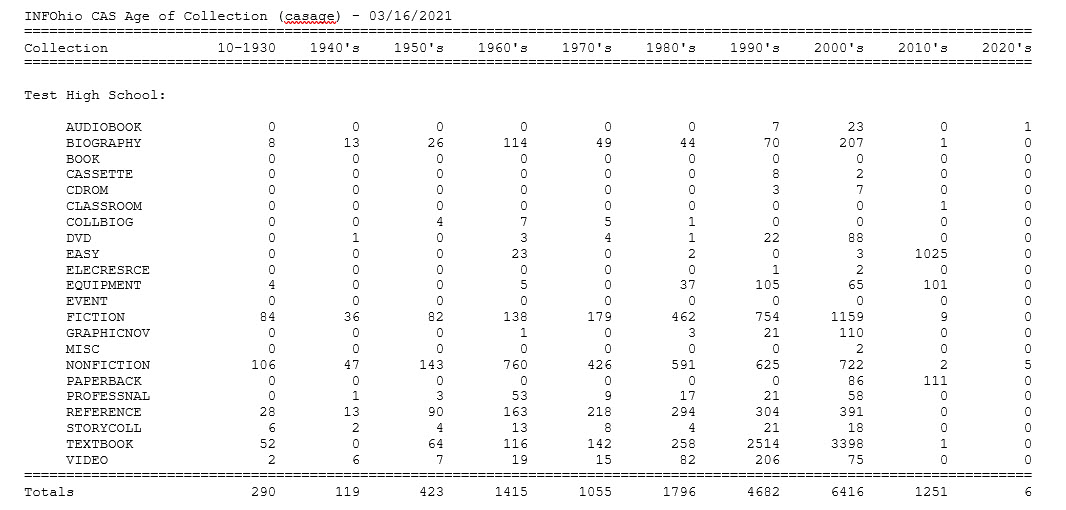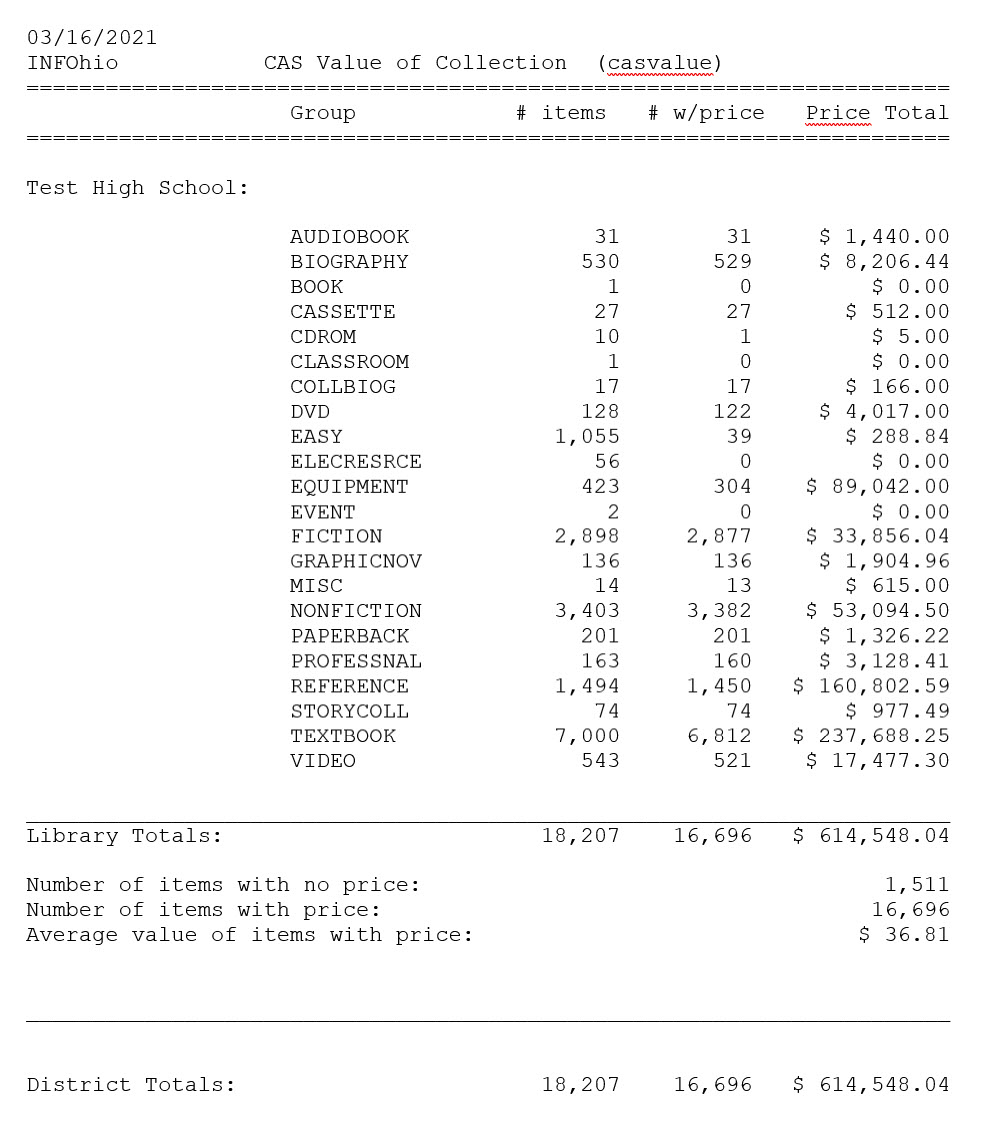One aspect of collection development is maintaining the library collection with relevant and accurate materials. Items become lost and damaged every day. Students and staff have a wide range of interests. Curriculum needs change. New materials cost money. One way to ensure budget needs are heard is by using collection reports to advocate for funds. For further advocacy efforts, check out the Advocacy Class within this pathway and for more information on budgets, please see the Buying Books module within this class.
Reports from your library services platform can help advocate for new materials and advise you on which materials to add to the collection. A few helpful reports found in INFOhio's LSP are Age of Collection, Value of Collection, the Shelf List Report, and the Lost Items Report. If you use another library services platform, check to see if similar reports can be generated.
Age of Collection - An Age of Collection report can break down the collection into year/decade bands. After running the report, you can see where the publication dates fall. In the example below, the majority of the nonfiction collection is older than the 2000s. This is a compelling piece of information to advocate for further funds to help modernize the library. 
Value of Collection - With this report, librarians can provide a total value of the collection, as well as the number of items within each item group. For example, if you are advocating for more funds to grow the nonfiction section, it is helpful to know that the library contains 3,403 nonfiction items for a total of $53,094.50. Further analysis with the Age of Collection report can provide details to support your request. 
Run the Shelf List report to identify items never checked out. Depending on the limiters you use, you can find Shelf List Items with No Checkout and Older Items with No Checkout History - Taking a closer look at items that are circulating well or not at all can help determine purchasing needs for the future. Extremely popular titles may warrant another copy being purchased. For titles not circulating at all, it may be time to remove them and purchase newer items more appealing to your readers.
Lost Items - Re-order any lost items, especially those popular or related to the curriculum. Determine the dollar value of the lost items in the collection and provide that information to your administration. If newer items have been lost, having funds to replace them will keep the collection current and relevant.
Some vendors will do a Collection Analysis for free. Two such companies are Mackin and Follett. To access the Collection Analysis information on the vendor sites, you will need to create an account and log in.
What Is a Collection Analysis?
The analysis gives a better idea of the strengths and weaknesses of the collection. It will break the collection down into its individual parts and pieces, whether those are materials types, item groups, publication dates, and/or content to give a better understanding of how the collection stacks up to an exemplar. Depending on which company does the analysis, you may receive different information. Use the results for purchasing and weeding.
How Does It Work?
To submit a collection analysis, create an account for the chosen company. Most collection analysis reports require you to fill out collection information such as the number of students you serve, call number information, and other identification details along with a MARC records upload. If you are automated with INFOhio's LSP, your ITC Library Support Staff can help with the MARC record extract if needed. Once the MARC file is uploaded, the analysis will run, and you will receive an email with the collection breakdown. This information is also available through the account you created on the company website. Spend some time looking over your results. Is there anything surprising? What areas need help? What could be improved and what is working well? Planning to do a collection analysis once a year is a good idea.
Whatever reports you use, share this information with Administrators to help advocate for funds to make sure the library collection is relevant and up-to-date.
Fetch is avaiable to INFOhio automated schools. If you are an INFOhio school, please log in with your school username/password using the button at the top-left corner of this page.
For more information about Fetch, please visit the Fetch information page or contact INFOhio support at https://support.infohio.org.